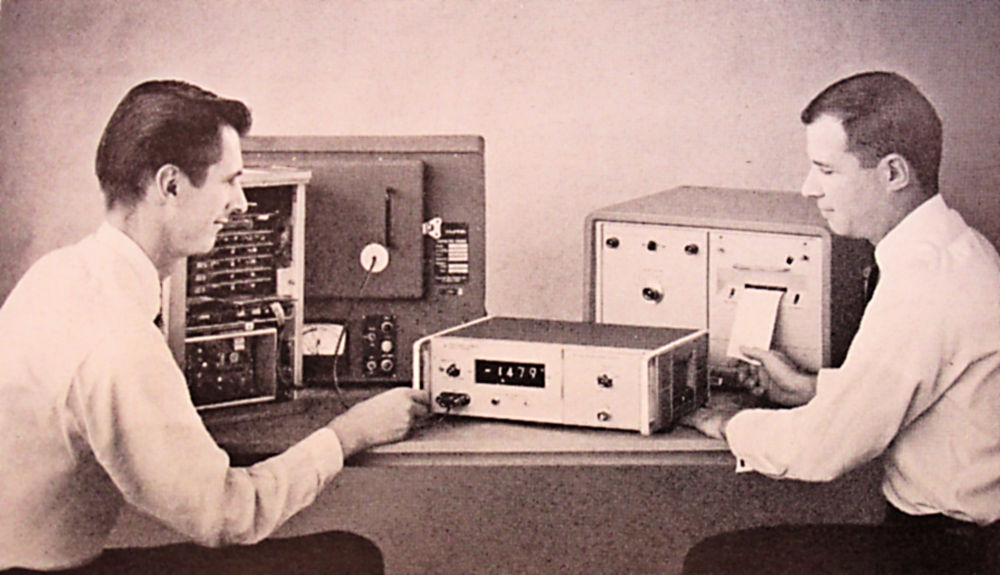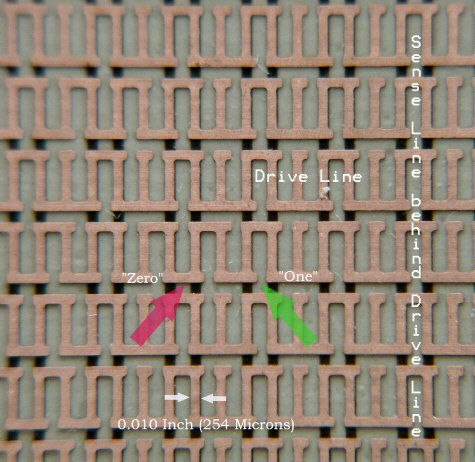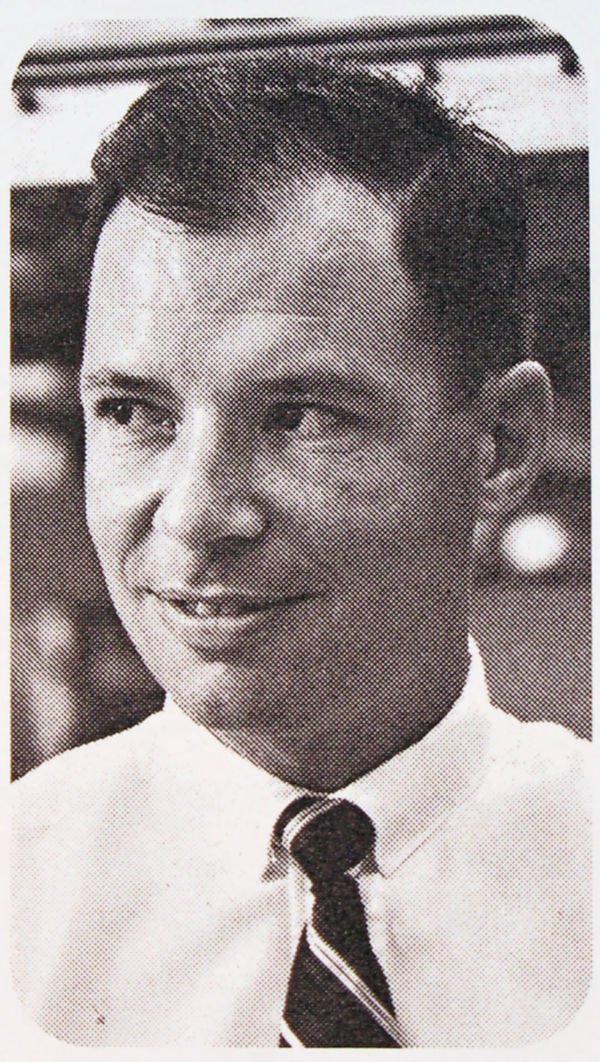The man sitting across the desk from me had come to Case Western Reserve University in the winter of early 1975 to recruit new engineering graduates for Hewlett-Packard. The university had recently acquired an HP 9830A desktop computer and 9866A thermal page printer. These two products transformed my computer experience. Instead of feeding punched cards into a card reader/line printer and waiting for the printer to spit out several greenbar pages telling you that the Univac 1108 across the street from the computer department building had detected a syntax error in your second card and aborted your run, the HP 9830A was a self-contained, interactive computer on a desk. When you closed the door to the room where it resided, it was all yours. It was incredible. It was revolutionary. It was the future. I told the man across the table from me that I didn’t care where that HP 9830A was made, that’s where I wanted to be.
The man recruiting for HP was Chuck Near. I didn’t know it at the time, but he’d designed the processor board set for the HP 9830A, and he was knee-deep in this computer revolution. His simple reply to my request: “I think that can be arranged.”
Sometimes, the planets align.
Chuck Near opened the door to HP for me and gave me entry into a career as a newly minted electrical engineer. In July 1975, I started working as a design engineer in HP’s Calculator Products Division (CPD) lab in Loveland, Colorado. Back then, Loveland was an agricultural town where the farmers grew sugar beets and Hewlett-Packard made the world’s most advanced desktop computers. I started in Chuck Near’s Peripherals and I/O Section of the CPD lab. That was 48 years ago. Close to half a century.
I discovered recently that Chuck Near passed away in 2020. You’ve probably never heard of him. I’m about to remedy that, because Chuck Near made major contributions to HP and to the electronics industry.
Chuck Near earned a BSEE from Michigan State University in 1961 and joined Hewlett-Packard’s HP Labs later that year. His first project at HP Labs was the 3440A digital voltmeter (DVM). HP was possibly the fourth or fifth company to offer a digital voltmeter with the introduction of the 405AR in 1958, following Non-Linear Systems (NLS), Cubic, and Cohu. NLS introduced its first DVM in 1952. Cubic followed in 1957 and Cohu introduced its first DVM a year after that. These three companies made electromechanical DVMs based on precision resistor ladders and stepping switches adapted from automatic telephone switching systems. HP’s all-electronic 405AR 3-digit DVM used single-slope integration. Despite its more advanced design and advanced Nixie-tube display, the HP 405AR was simply not competitive based on its specifications. It did poorly in the marketplace.
Near teamed with Dave Cochran on the HP 3440A DVM project. Cochran had started working for HP as a lab technician when he ran out of money and wasn’t able to complete his EE degree at Stanford University. When Cochran and Near joined as a team, Cochran already had one successful design project under his belt: the HP Model 204B audio oscillator, a transistorized version of HP’s tube-based Model 200. The Model 200 oscillator was a Bill Hewlett design and HP’s first product, so it was treated with great respect.
Instead of the 405AR’s single-slope integration, Cochran and Near planned to use a newer dual-slope integration technique that would automatically compensate for measurement errors caused by component tolerances. However, to get this technique to work, the design required precisely matched, thermally connected diodes. Cochran persuaded a colleague in HP’s solid-state lab to fabricate a single-chip dual diode, which he claimed was HP’s first integrated circuit, even if it had only two diodes on the chip. By management edict, the team also leveraged as much of HP’s existing technology as possible, including decade-counter/display assemblies developed by HP’s Frequency and Time Division for its line of timers and counters.
HP introduced the 4-digit HP 3440A DVM in November 1963, and it was a smash hit, selling more than ten thousand units by 1968 and firmly establishing HP as a competitive DVM maker. With a maximum sample rate of five readings/second, the HP 3440A was much faster than its electromechanical competition. The HP 3440A DVM became the first of a very long line of successful HP 3400-series DVMs and DMMs. That tradition continues through Keysight, founded in 2014, which is one of several spinoffs from the original HP.

Chuck Near (right) and Dave Cochran (left) put the HP 3440A DVM through its paces in 1963. Image credit: HP Journal
After completing the 3440A DVM project and then earning an MSEE from Stanford University in 1964, Near started a new project at HP Labs. HP was just starting to get into computers and would introduce the HP 2116A 16-bit minicomputer in 1966, after a 1-year development project. At the time, the norm with minicomputers was to store both code and data in magnetic core read/write memory. HP bought its core memory from Ampex.
Getting the operating system and programs into core memory was the first step in operating these computers. Paper-tape boot loaders were the generally accepted technique, and I can state from personal experience that boot loading is a pain. Rewinding the paper tape after it spools out onto the floor is also a pain.
In addition, core memory is expensive, so Near and Arndt Bergh started developing a ROM, which could be used to store a loader in minicomputers. But they did not set out to develop a semiconductor ROM because IC processes would not be able to produce large ROMs capable of storing programs for several more years.
However, Near’s pcb ROM didn’t end up in HP’s minicomputers. Instead, HP Labs started another project in 1965, and it urgently needed a ROM. That year, physicist/mathematician Malcolm Macmillan and inventor Tom Osborne made presentations to HP Labs within a few weeks of each other. Both men had developed prototype desktop calculators and thought HP might want to enter that business. The closely timed visits by Macmillan and Osborne sparked HP Labs director Barney Oliver to direct some of HP’s creative engineering energy in an entirely new direction.
Macmillan’s Athena calculator prototype could perform trigonometric and transcendental functions based on Jack Volder’s CORDIC algorithms, but the prototype was a fixed-point machine, and its hardware design was enormous and buggy. Osborne had also developed a calculator which he called the “Green Machine.” It was a floating-point design based on a very elegant hardware design using a 64-bit VLIW processor and built with discrete transistors, but it was a 4-function calculator and didn’t perform transcendental calculations like the Athena. Oliver realized that HP could create a winning product by merging the ideas behind these two machines to create a scientific calculator that would appeal to engineers.
Oliver took Osborne to see Chuck Near’s pcb ROM. At the time, it was only a tiny 64-bit ROM (8 words by 8 bits). Oliver asked Osborne if his calculator design could be adapted to use this technology. With some hesitation, Osborne said, “Yes.” His hesitation wasn’t caused by the thought of converting his design to ROM. It was caused by his uncertainty that Near’s experimental ROM design could be scaled up by a factor of 500, which is the size Osborne estimated he’d need for the calculator’s ROM. Given a “yes,” Oliver tasked Osborne with adapting Near’s ROM for the desktop calculator, which would eventually be called the HP 9100A.
Near’s HP 9100 ROM design employed inductive coupling between drive and sense layers and eventually achieved a bit density of 1000 bits/in2 with significant technical contributions from Osborne and heroic efforts to achieve 10-mil traces and spaces from HP’s pcb shop in Loveland, Colorado. (Today, 5-mil pcb traces and spaces are routine.)
Unfortunately, the standard multilayer pc-board technology of the day couldn’t produce a reliable, high-capacity ROM due to the material sandwiched between the various layers of the multilayer pcb. A multilayer pc board is made by first producing several very thin double-sided boards and then sandwiching them together. The standard sandwich filling is a fiberglass mat impregnated with resin (called “prepreg”) and the layers are bonded together using heat to melt the resin and tremendous pressure.
The final ROM board design consisted of a sandwich of eight double-sided boards. The prepreg’s electrical properties were sufficiently inconsistent to make the early prototype ROMs operate unreliably. There was too much electrical leakage. Barney Oliver, the director of HP Labs, suggested using Teflon instead of prepreg. Near tried augmenting the prepreg layers with Teflon sheets. It worked and became the “secret ingredient” in HP’s circuit-board ROM. Teflon sheets remained an HP trade secret for many years. The Soviet Union tried to copy the HP 9100A, and would have succeeded, except the Soviet engineers could not replicate the pcb ROM.

Photomicrograph of the inner layer of Chuck Near’s 32kbit pcb ROM showing the zig-zag drive lines (copper color) and the sense lines (black lines behind copper lines). HP’s pcb shop eventually achieved 10-mil line widths by pushing the limits of circuit-board lithography circa 1968. Image credit: Tom Osborne
HP introduced the 9100A calculator in September 1968. With its transcendental functions, programmable capabilities, and integrated magnetic card reader for storage, the 9100A was a huge success and pushed traditional calculator vendors like Wang out of the market.
Marco Negrete, R&D lab manager at HP’s Loveland Division in Colorado, brought the HP 9100A from HP Labs in Palo Alto into Loveland as a unique product line that would help build the division. He suspected that desktop computation might just be a high-growth market. He would prove to be correct. At the same time, Negrete convinced Chuck Near to move to Colorado, something he’d been trying to do since Near and Cochran developed the HP 3440A DVM. Near had devoted a lot of time to developing automated production tests based on the HP 2116 minicomputer for HP 9100A components, including the 32kbit ROM board.

Chuck Near in 1968. Image credit: HP Journal
The HP 9100A was so successful that it opened big new markets for HP and sparked the creation of a new HP division, the Calculator Products Division (CPD). CPD’s first major project was to plan, design, and build the HP 9100A’s successor. CPD’s engineers defined a family of desktop calculator/computers, with mid-range and high-end desktop calculators in addition to a low-end model that would replace the HP 9100. These three new machines would be called the HP 9810A, 9820A, and 9830A.
The HP9810A was the direct successor to the HP 9100A, and it used a stored-key programming language similar to the programming languages now used with handheld programmable calculators. The HP 9820A employed a more computer-like algebraic programming language, which would eventually be named HPL for “high-performance language.” The top-of-the-line HP 9830A would implement an HP-enhanced variant of the BASIC programming language, originally developed by Kemeny and Kurtz at Dartmouth College in the early 1960s. All three machines would be based on the same processor, which would leverage the HP 2100 minicomputer family’s instruction set.
Chuck Near, along with several other CPD engineers, developed a multi-board processor that implemented the HP 2114A’s 75 instructions using a bit-serial implementation to reduce costs. This same board set was used in all three desktop calculator/computers, each with different language ROMs (semiconductor ROMs this time) and different sets of built-in peripherals. Near also managed to convince HP’s Andover Division to use his processor board set in the design of the HP 5380A gas chromatograph (GC), which was the first processor-controlled (sometimes mistakenly described as “microprocessor-controlled”) analytical instrument to enter the market from any vendor. Agilent took over HP’s GC products in 1999 and still builds descendants of the HP 5380A GC today.
After finishing the 9800 series processor, Near took over the newly formed peripherals and I/O group within CPD. Near moved within the CPD lab again to help manage division’s far more ambitious 9845A project. Like the HP 9830A, the 9845A was programmed in BASIC, but in an extremely expanded version.
The HP 9845A had more of everything: two tape cartridge drives for program and data storage instead of one tape cassette, a full CRT that could display graphics and text simultaneously instead of a single-line LED display, and a full-sized page printer integrated into the machine instead of an add-on peripheral. Befitting a large project like this, the HP 9845A incorporated two CPD-developed hybrid microprocessors, which employed the HP 2100 minicomputer family’s instruction set, just like the multi-board processor set used in the HP 9810A, 9820A, and 9830A. Introduced in 1977, the HP 9845A was another huge success for HP’s CPD.
Near left CPD for HP’s Vancouver Division (VCD), which had been founded in 1979. VCD’s first significant product was the HP 2225A ThinkJet printer, introduced in May 1984. The Thinkjet was HP’s first thermal inkjet printer. It employed a printhead that had been developed at HP Labs and HP’s Corvallis Division. Inkjet printers quickly overshadowed noisy dot-matrix impact printers, and the product line remains a big part of HP Inc’s product line. HP Inc is another spinoff from the original HP, founded in 2015.
Eventually, Near ended up at HP’s San Diego Division, where the 7400 and 7500 series grit-wheel plotters were made. He worked on plotter marketing and managed the printer ink chemistry group for a couple of years while it worked with DuPont to commercialize the first pigmented inkjet ink. In his last two postings, Near had become involved in the world of high-volume, high-margin consumables, first with ink cartridges and then with plotter pens. These businesses have helped to sustain HP through otherwise bad times over the decades.
Throughout his long career at HP, Chuck Near helped the company enter new markets: DVMs, desktop calculators, desktop computers, inkjet printers, and digital pen plotters. I spoke with Chuck on the telephone a few times after he retired. Eventually, I could no longer reach him. He retired from HP in San Diego and passed away in June 2020.
Thanks for everything, Chuck.
References
In Memoriam: Dave Cochran, an Engineer’s Engineer
A Quarter Century at HP by David S. Cochran







